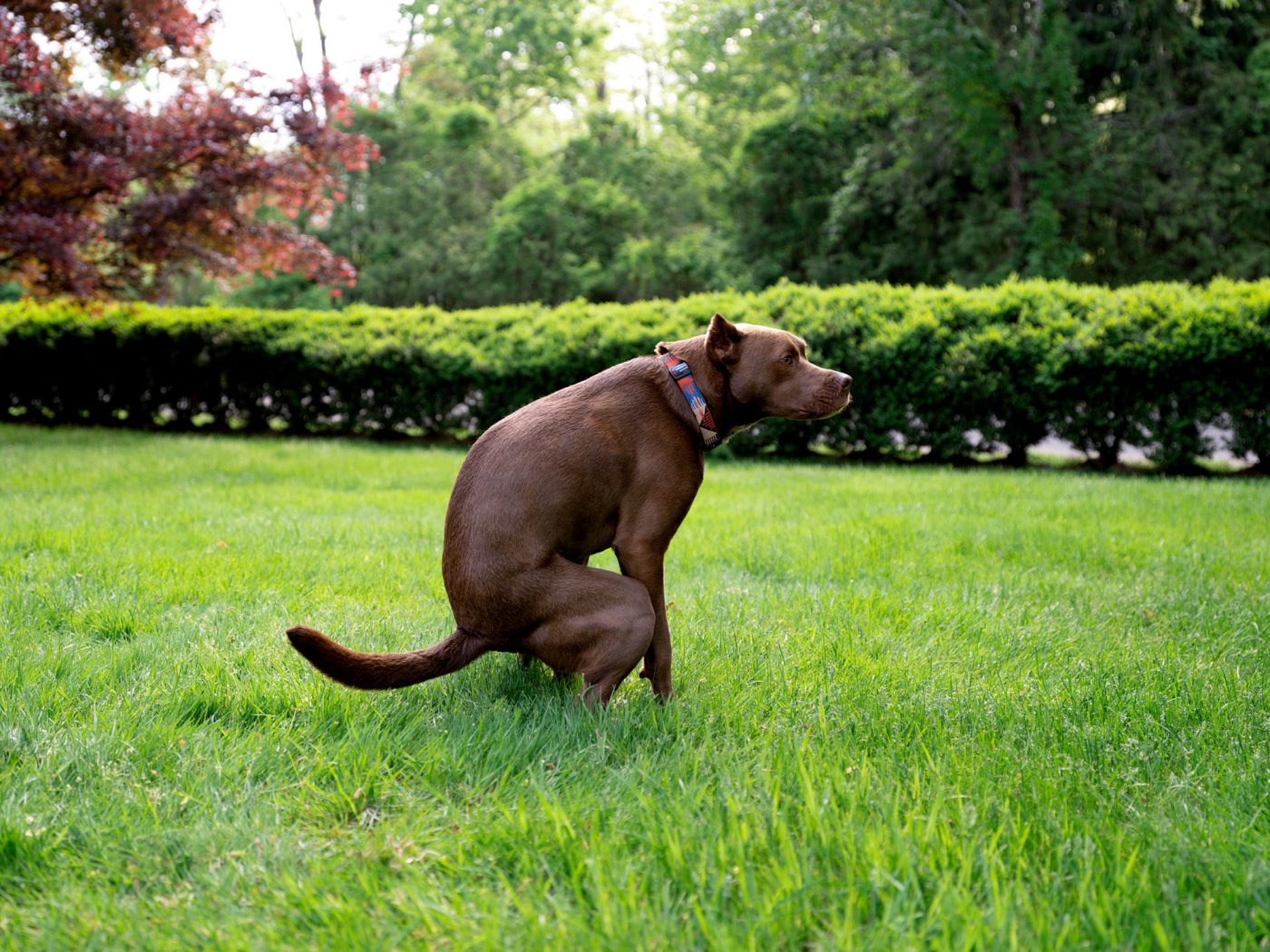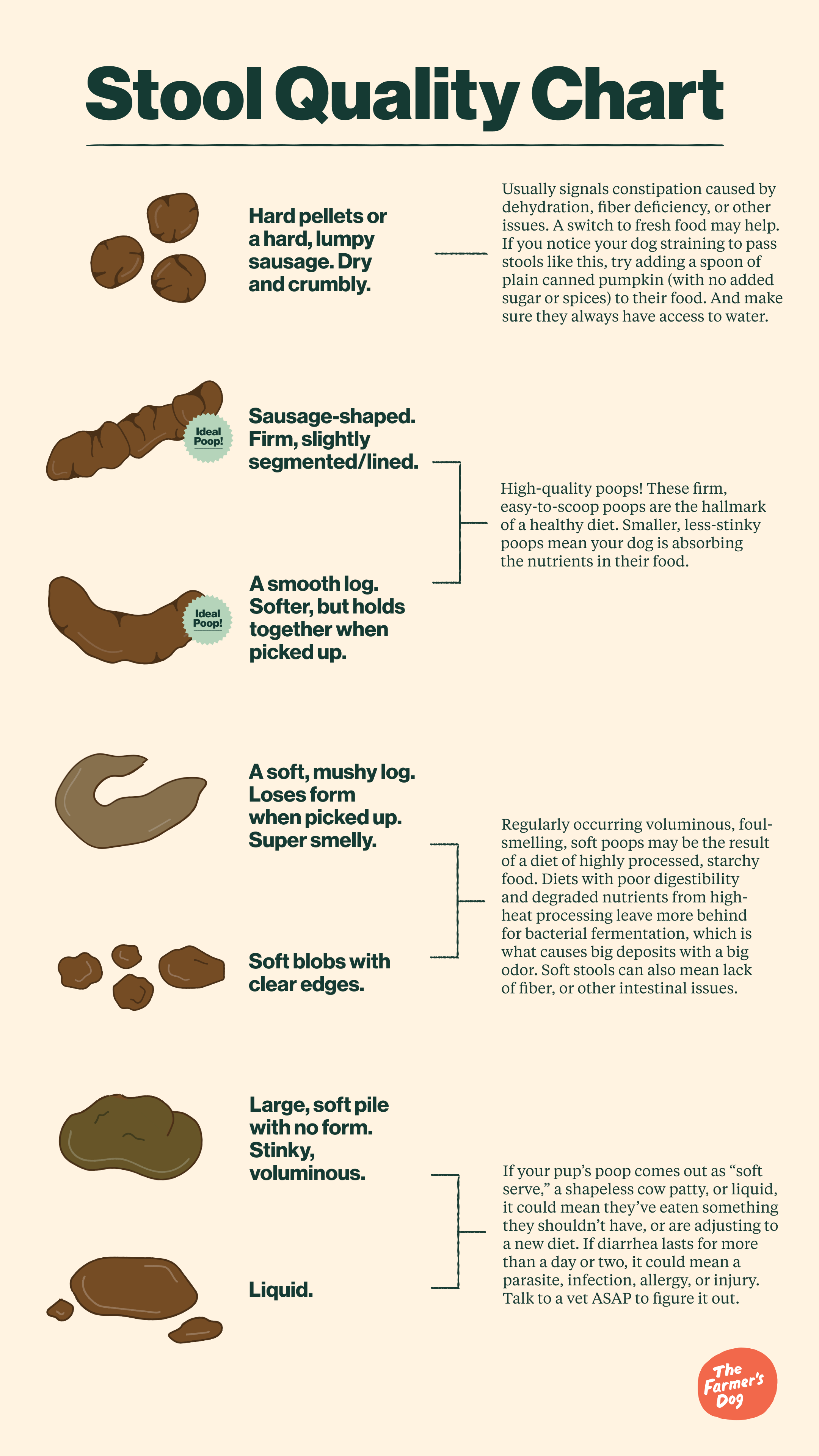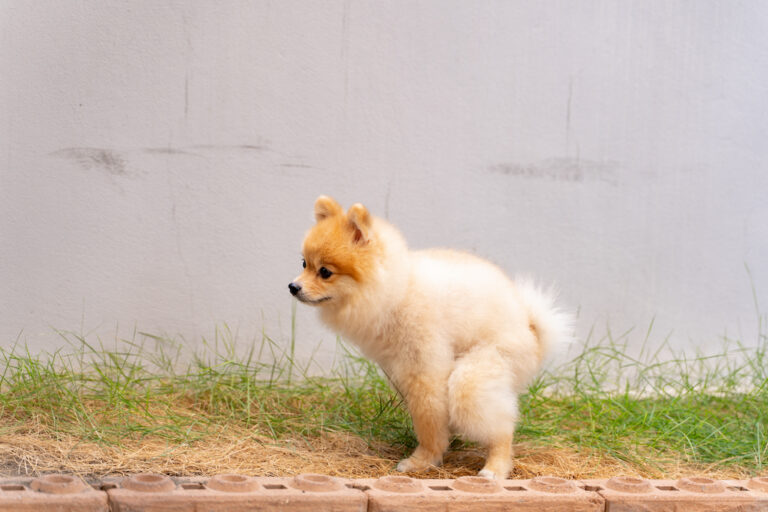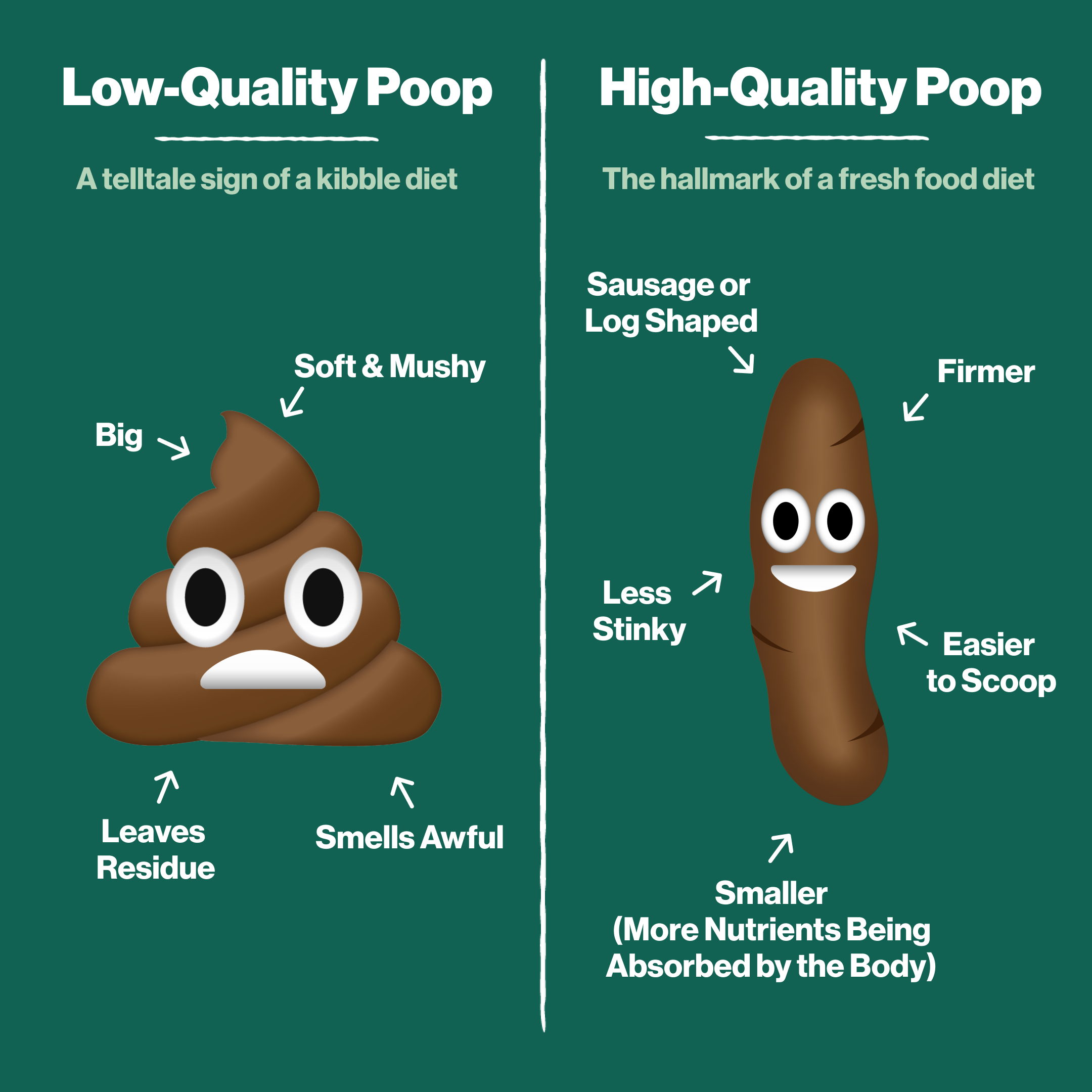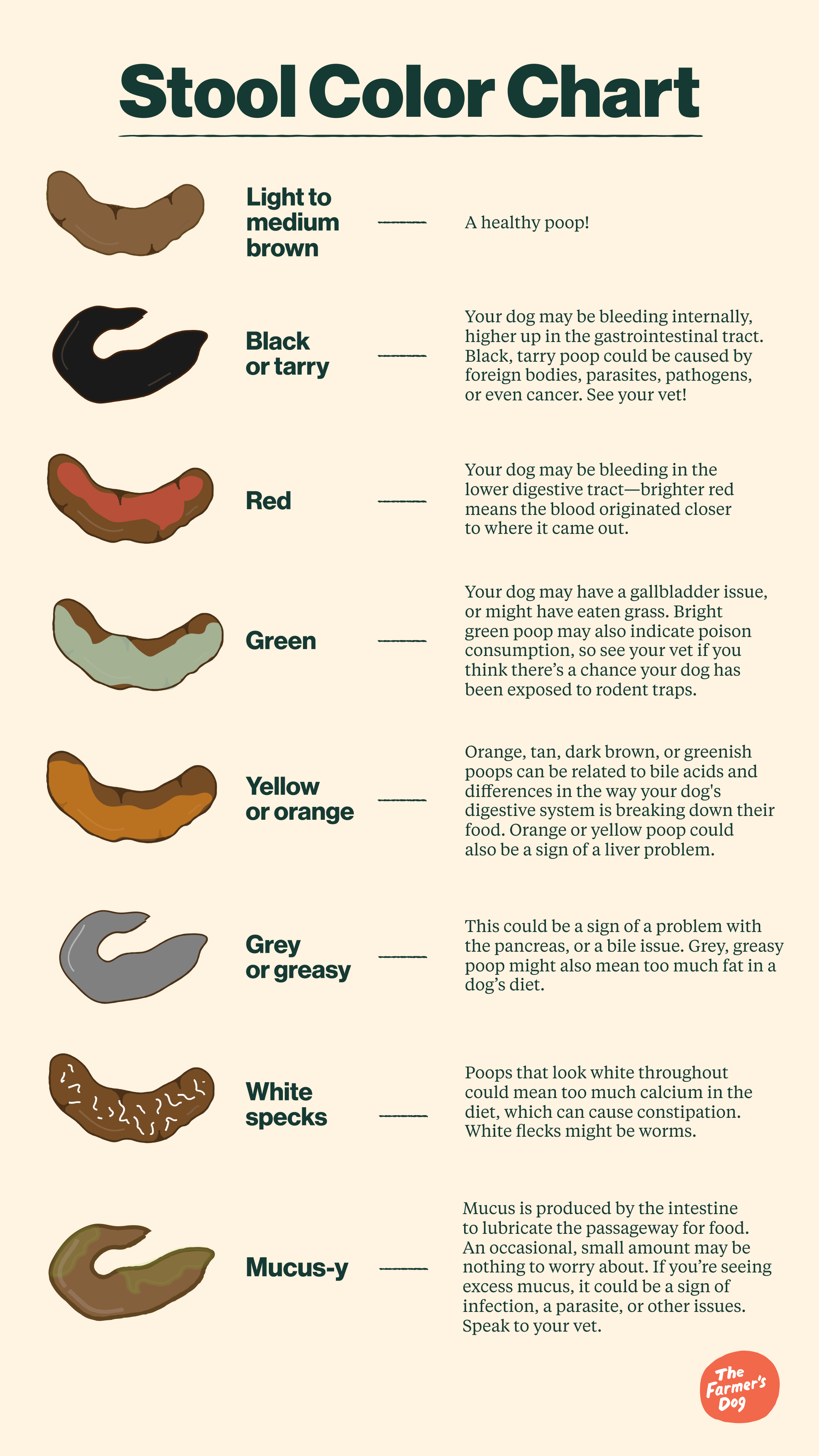A few years back, The Farmer’s Dog aired a commercial featuring a testimonial from a real customer. While describing the ways fresh food had changed his dog’s life and health, he used the words “high-quality poops.” The memorable turn of phrase amused, confused, and even perturbed some viewers who wondered: What does that mean? Is “high-quality poop” an oxymoron? And should we even be talking about our dogs’ poops?
Here’s our answer: while you’re not likely to put your dog’s poop on a podium in an art gallery, there is such a thing as “high-quality poop”—and the state of your dog’s stool can give you valuable information about their health.
A well-formed poop can signal that your dog’s digestive system is in good working order and their body is absorbing the nutrients in their food. Soft or discolored stools, on the other hand, can alert you to conditions requiring veterinary intervention or dietary adjustments. So identifying a high-quality poop–one that looks, smells, and feels right–is a valuable skill for any dog’s human.
If you’re new to poo review, we have some tips for you; read on for the definition of a high-quality poop and check out our poop chart to learn how to spot one.
How dog poop should look
Your dog’s waste should be a solid log shape, which can be smooth or segmented. Normal dog poop is light-to-dark brown, but not black (for more info on what red, black, and other colors of poop mean, read our guide).
How dog poop should feel
When you pick up a piece of dog poop in a bag, it should come up cleanly without smearing the sidewalk. Through the bag, it should feel solid—firm, but not hard. Many experts compare this ideal texture to Play Doh.
Poop that’s too hard could mean that your dog is dehydrated. If it’s too soft, they might be dealing with a parasite or another intestinal issue. Diarrhea could be due to an infection, an injury, an allergy, or another problem. Regardless, anything out of the normal range that happens more than once merits a call to the vet.
If you see excessive mucus in or on your dog’s poop, it might be because they’re experiencing inflammation caused by infections, parasites, toxins, spoiled food, allergies, or other culprits. An occasional, small amount of mucus may be nothing to worry about, but if there’s a lot or it appears frequently, talk to your vet.
How much your dog should poop
When it comes to poop, quantity can be a part of quality. We can’t say what the exact volume of your dog’s poop should be—there are too many variables, including your dog’s size, to take into account—but the more of their food they absorb, the less of it they’ll poop out. A diet containing fresh, human-grade meat provides highly digestible protein. Kibble often contains starchy fillers, and protein in the form of powdered “meal.” That’s why, if you switch from kibble to a fresh diet, you may notice that there’s less for you to clean up at potty time. Research has found that dogs fed fresh, human-grade food produced significantly less fecal matter than those on a diet of kibble.
How dog poop should smell
We wouldn’t recommend taking a big whiff of any dog poop—no species’ waste is likely to be an olfactory delight—but your dog’s poop shouldn’t have an eye-wateringly foul smell. An unusually strong or unpleasant odor could be a sign of a health problem in your pup. If you notice a persistently noxious stench from your dog’s poop, ask your vet to check them out.
Your dog should not have diarrhea all the time
Don’t let the poop emoji fool you: healthy poop should not look like soft serve, let alone something with even less of a shape. Some humans whose dogs have regular digestive issues come to accept such bowel movements as normal, but they should be addressed. Like people, dogs sometimes get upset stomachs that change their bathroom output—this could happen for a few days while your dog transitions to a different food, for example—but If your little buddy routinely has soft stool, it could be a sign that something is wrong. If your dog is experiencing this, talk to your vet.



